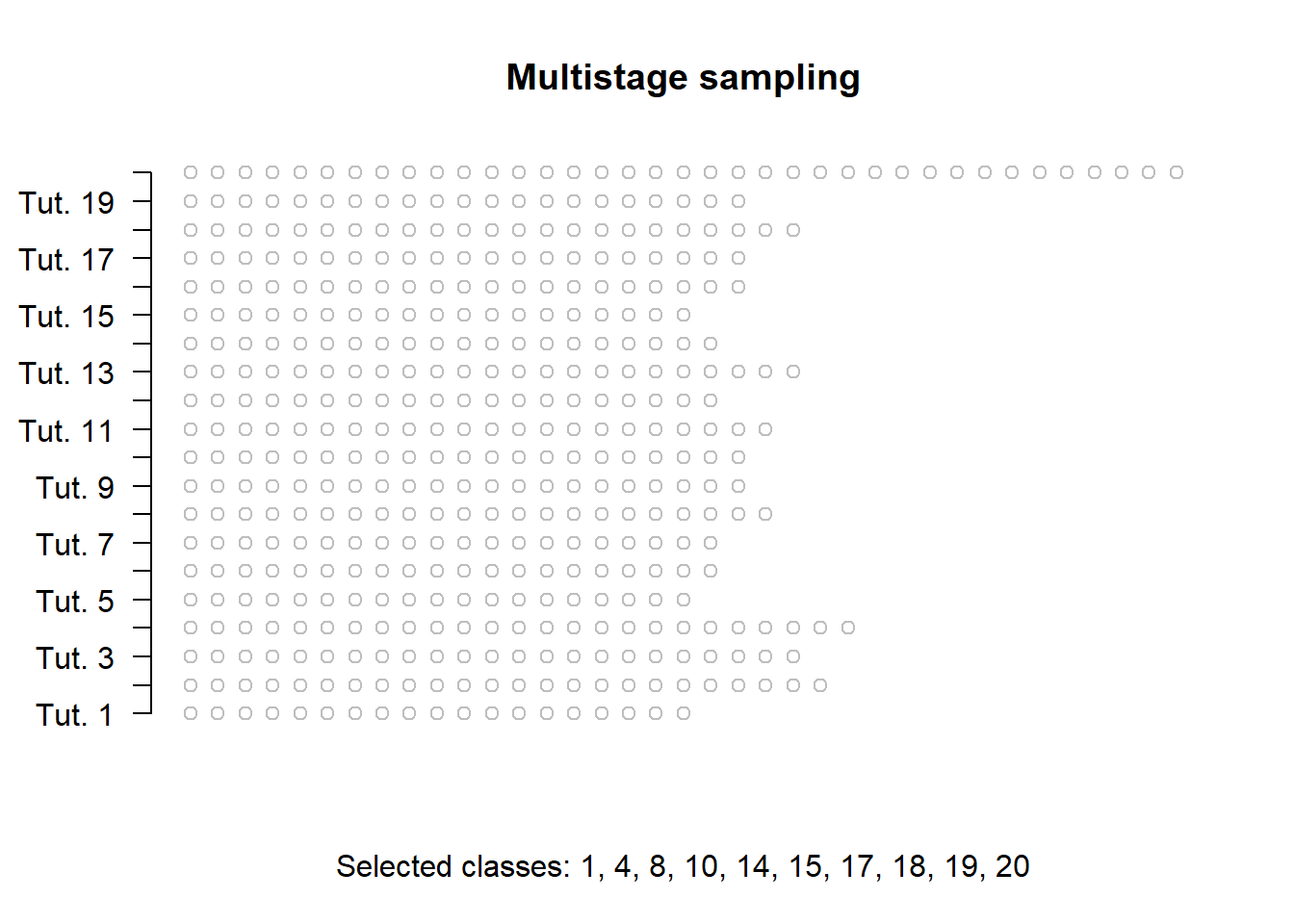2.8 Multistage sampling
![]()
In multistage sampling, large groups are selected using a simple random sample, then smaller groups within those large groups are selected using a simple random sample. The simple random sampling can continue for as many levels as necessary.
Example 2.8 (Multistage sampling) To select students in a large course at a particular university again,
a simple random sample of (say) ten of the many tutorials could be selected (Stage 1),
and then 4 people randomly selected
from each of these 10 selected tutorials (Stage 2).
The animation below shows how a sample of approximately 40 students could be obtained using multistage sampling, by randomly selecting 10 classes at random in Stage 1, then randomly selecting students from each class in Stage 2.

Example 2.9 (Multistage sampling) Multistage sampling is often used by the Australian Bureau of Statistics (ABS). For example, to obtain a random sample of Queenslanders, one procedure is:
- Stage 1: Randomly select some cities in Queensland;
- Stage 2: Randomly select some suburbs in these chosen cities;
- Stage 3: Randomly select some streets in these chosen suburbs;
- Stage 4: Randomly select some houses in these chosen streets.